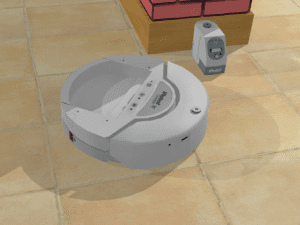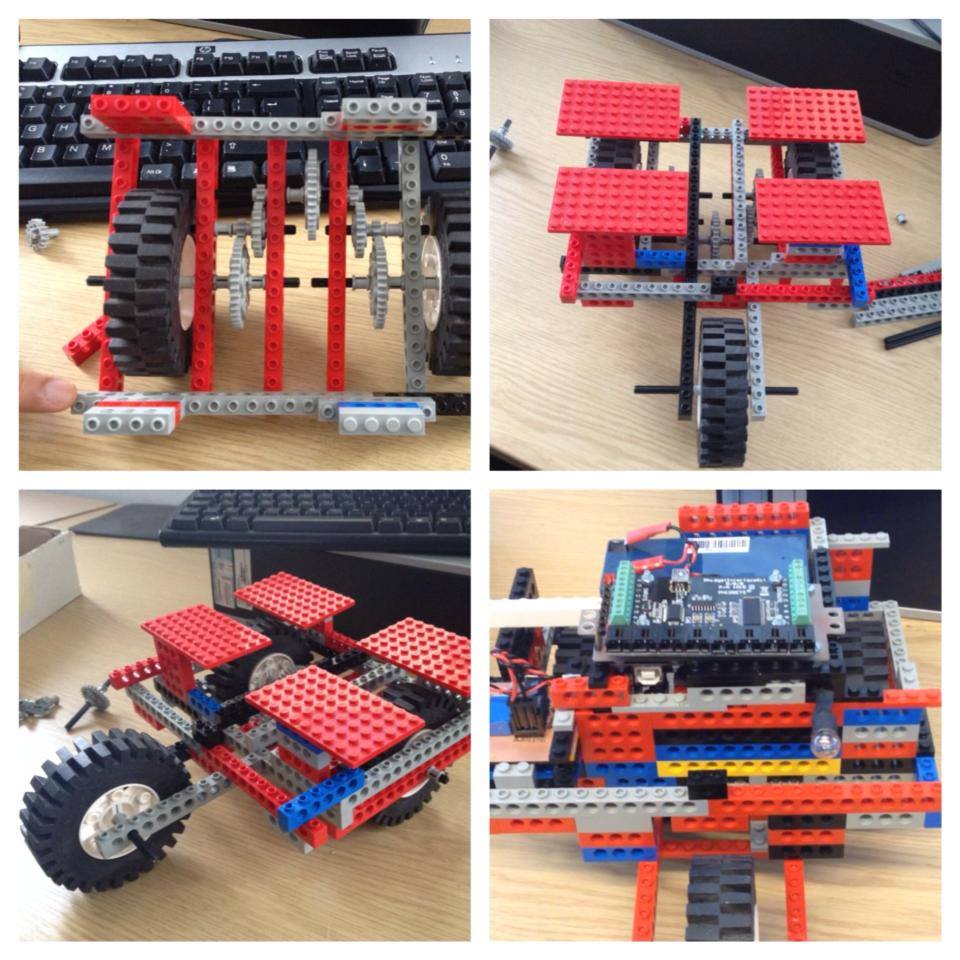Learn robotics on a budget at home
So you want to get started with robotics and want to get your hands dirty but don’t want to break your bank? Alright, I got you covered and in this article we will look into some avenues that will help you learn robotics on a budget at home. In what follows, we will look into an array of resources- some free, some paid and some could be discounted to help you learn robotics on a budget.
Additionally, this article assumes that you are an early stage researcher and are yet to find your core area of research so it provides resources that touch upon various related disciplines within robotics.
Table of Contents
- What is the cost of a robot?
- [FREE Resource] Find Robotics YouTube Channels
- [FREE Resource] Sign up for Robotics Courses
- [FREE Resource] Sign up for Complementary Courses
- [FREE Resource] Spawn your 1st robot in Simulation
- [PAID Resource] Learn basic circuit design using breadboards
- [PAID Resource] Learn basic programming of microcontrollers
- [PAID Resource] Build your 1st hobby robot using kit
- [PAID Resource] Sign up for a Remote Robotics Lab
What is the cost of a robot?
Even if you are totally new to the field of robotics and you try to envision a robot, industrial or otherwise, you might be thinking about a price tag of several thousand of dollars. You might be in the ball park as most commercial robots start at this price range and then the prices go up as you add more customizations such as sensors, safety equipment, support and so on.
But, here is the thing- as a beginner in robotics, especially someone looking to learn robotics at home on a budget, you do not need thousands of dollar to put in from your own pocket. Let us look at an array of available resources to help you get started with robotics without breaking your bank.
[FREE Resource] Find Robotics YouTube Channels
In your quest to learn robotics on a budget at home, let us begin by looking at arguably the most abundant and FREE resource- YouTube. I say arguably FREE because you still need to pay for electricity, wifi, computer, etc. but let’s ignore them for the moment in lieu of the massive value you can gain from the available information.
There are few different robotics channels by various types of creators- like Professors, Undergrads, Engineers and Postdocs like myself. The aim of the channels could vary as per the vision of the creator. For instance, an Engineer might try to give you more of industrial insights whereas I mostly provide academic insights and focus on early stage roboticists. If you are interested in learning the basics of mobile robotics and grab resources to help you ease into academic, feel free to head over to my channel.
[FREE Resource] Sign up for Robotics Courses
Now this could be considered more of a Freemium type of resource to complement what you find on YouTube. There are a lot of robotics courses you might find for FREE, some might be discounted for students, while others might be Paid. But at least, try and consume the knowledge offered by the FREE courses first. Let us look at some resources where you can sign up for Courses:
- Alternative E-learning platforms: If you did not know already, there are some e-learning platforms such as Udemy, Coursera, Edx that offer various robotics modules and some of them might even be FREE to enroll.
Remember that these are e-learning platforms and not a University as such but often the instructors are well reputed and affiliated with academia in various forms. Some of these courses might also offer a Certificate upon completion which you might be interested in. - Academic E-Learning: Given the shift towards digitalization during the pandemic and even prior to it, a lot of Universities launched digital learning platforms or e-courses.
This not only helped their own students but also others around the globe to acquire knowledge from the comfort of their homes. Some top notch Universities like MIT, Stanford, Indian Institute of Technology, Queensland University of Technology offer pre-recorded lectures in robotics. Some of them might eventually lead back to the robotics YouTube channels you have identified earlier.
[FREE Resource] Sign up for Complementary Courses
As you consume knowledge in the realm of robotics, you will come across a lot of concepts you might not be able to grasp immediately. These could include- Object Oriented Programming, Linear Algebra, Statistics, Differential Equations, Signal Processing etc.
As you continue to learn, make note of all such concepts that are not immediately clear. Dedicate ample time to acquire supplementary knowledge in these topics and sign up for Complementary courses or scour additional YouTube channels that can help you with these topics.
If you leave gaps in knowledge you will find it hard to figure out what aspect of robotics do you really like and want to build a career in. So, make sure not to skip steps or skim read the important concepts as a strong foundation is crucial to building your career later. And just like the robotics courses you might find these as freemium resources and will usually know about these ahead of time when the instructor explains the prerequisites to the course you are taking.
On a similar note, you might have an inclination towards Mechanical design in which case you should try explore more of Computer aided Design (CAD). In doing so, you can try build and design your own custom robot prototypes and understand their mechanical properties such as load bearing capacity, stress-strain, vibration compensation, performance using various raw materials and so on. Once you are able to do this, you don’t necessarily need to go for a high end replica in real world. Think more along the lines of budget 3D printing wherein you can easily pool resources such as borrowing 3D printer from a friend, colleague or local library.
[FREE Resource] Spawn your 1st robot in Simulation
All this time, your efforts were focused on acquiring a lot of theoretical knowledge in Robotics. And you would be naturally curious to play with a robot to supplement your theoretical knowledge. A FREE way to do this is to spawn your 1st robot in Simulation. The good thing is that most robotics simulators like Webots, CoppeliaSim (formerly V-REP), Gazebo, Mujoco are very advanced and are able to simulate Physics quite well so you can play around with various sorts of robots without spending a penny.

For some of these simulators you might be able to work on as a standalone setup but for the most part, you would need to deploy them in conjunction with Robot Operating System (ROS). In my course TT101: Basics of mobile robotics there is a lecture module wherein I have provided a step-by-step worked module which allows you use your keyboard and move the robot around in a simple environment.
The good thing about simulation environment is that most of them support various platforms so can test out ground robots, drones, manipulators etc., to get the hang of how each of these work.
[PAID Resource] Learn basic circuit design using breadboards
Contrary to what you might assume, a breadboard has nothing to do with the bread you eat for breakfast or the board used to slice it. A breadboard as shown in the figure in the inset is actually a board used to prototype circuits and test out the circuit design you have in mind or on paper. Although they come in a few different sizes, their main purpose is to do away with the need to learn PCB etching or soldering while allowing for rapid prototyping. The red and blue lines typically demarcate the terminals of the power line whereas the rest of holes are used for mounting components and supplying them with power as needed.

In the context of robotics, what this means is that you do not need to build out the full circuit in one go, which can get quite complex in some cases. So, you can test out your circuit in batches and keep adding components incrementally.
One crucial thing that I learnt using breadboards when designing my own robots especially the assembled robot using off the shelf components was carefully integrating the high and low power components in the master circuit. As you might imagine, if not done carefully, you will end up smoking a component or two, which did happen to me but it was a great learning experience at a relatively low cost- I burnt a few small components as opposed to the whole robot.
Breadboards are very cheap to own and are very sturdy so they will last a while. Similarly, basic electronic components like LEDs, diodes, resistors etc., are also relatively cheap and often come in small packs so you can have spares at the ready.
[PAID Resource] Learn basic programming of microcontrollers
One aspect you would likely need to get your hands dirty with when it comes to Do It Yourself (DIY) robotics is microcontrollers.
If you do not know this already, a microcontroller is essentially the brain of the robot- it acquires data from various sources and uses a set of instructions to then pass on commands to the robot thereby helping you control it. Depending upon how advanced you make your microcontroller, you can modulate the level of autonomy of your robot. At the very least, you would need to write a couple lines of basic code which might require some C# skills.
Two of the most commonly used and relatively budget friendly microcontrollers are the Raspberry Pi and the Arduino. A word of caution, in loose terms you might consider a Raspberry Pi as a microcontroller but it is technically an embedded microprocessor. Nonetheless, you can easily purchase these boards from a nearby robot hobby shop or an e-commerce store. When ordering electronics components online, just be careful about the Customs regulations. Some times these electronics get stuck for Customs clearances and may cause delays in delivery.
In order to play around with an Arduino or a Raspberry Pi, you can purchase the device from a hobby store and connect it with the breadboard circuit. The good thing is that there are a lot of opensource projects out there that have released public libraries for people to test out and modify as needed such as the Adafruit. Try building some basic projects such as controlling an LED strip or similar before moving on to more complex projects like controlling robots.
Once you have the necessary components, be sure to get comfortable with programming as in robotics, you would need it not only for microcontrollers but at also for sensors and beyond.
[PAID Resource] Build your 1st hobby robot using kit
What a robot does in simulation vs reality are not necessarily identical
So, by this time you have gotten fairly deep and wide exposure into various related disciplines of robotics. You have already tried and tested out robots in Simulation and some of its hardware components like the microcontroller. As they say it, the best way to learn is by doing. So, it’s time to put your knowledge to the test and build your 1st hobby robot. But, don’t worry as we are not talking about the thousand dollar worth robot. We are more interested in a budget-friendly hobby robot. Here are some ways I got started with building robots during my academic career:
Option-1 (Lego Kits)

Option-2 (Arduino Kits)

Option-3 (Assembled Robots)

When it comes to building your 1st hobby robot, you can pick the most convenient DIY kit that suits your needs. I started out with Lego kits and played with ground robots and segway-like robots. Then I moved on to Arduino kits and tested out an Omnirover, learnt about wireless communication and sensor data logging while executing a predefined trajectory. Then, I went full-on custom by fetching off-the-shelf components and assembling my own all-terrain ground robot with various sensors and a Raspberry Pi for real-time data logs and communicating with on board motor controllers. Again, most of the available hobby kits are very budget-friendly and you can make all kinds of robots with them- aerial, ground, humanoid, legged etc.
[PAID Resource] Sign up for a Remote Robotics Lab
So, now you also have exposure with your very 1st hobby robot and hopefully you got this far without using duct tape and superglue to hold your robot together. If so, kudos to you and I hope you are having fun learning robotics on a budget in the comfort of your own home.
But if you are like me, you might be naturally curious to figure out a way to gain access to some of the more higher end robots but still don’t want to break your bank. For this, when we looked into 5 steps to getting started with mobile robots, we looked into a new business concept called Remote Real Robot labs.
Basically, these are labs that maintain a physical mobile robot while allowing others to gain cloud-based access to the platform and deploy their algorithms to be tested in a real environment. Often these providers would charge you minimal fee perhaps per session or per set of sessions. The upside to this setting is that you can get access to the robot virtually from anywhere in the world and your focus shifts more towards algorithmic development as opposed to design and hardware maintenance of the platform itself.
Naturally, this comes with a few limitations such as the service provide dictates what platform and test environment you can get access to. Owing to the cost of maintenance of such a facility, they may not be able to accommodate individual customization requests but just so you know, such a solution exists though are very limited at this time. Perhaps there might be more competitors in this space as time progresses.
Key takeaways
Robotics is a vast and highly interdisciplinary field, one that doesn’t usually come with a user manual. Also, at the outset might appear like it is a very resource intensive field given that it requires exposure to very expensive robots but you do not need to invest that money out of your own pocket.
If you are resourceful and keep an eye out for opportunities, you will be able to significantly reduce the upfront investment while getting a concrete exposure into robotics. This article was geared towards early stage learners who want to learn robotics at home on a budget.
We looked into 8 resources- 4 FREE and 4 Paid albeit the Paid resources are likely to fit within the budgets of most early stage learners. Be sure to keep an eye out for upcoming sales and discounts on the paid resources to maximize your learning potential.



